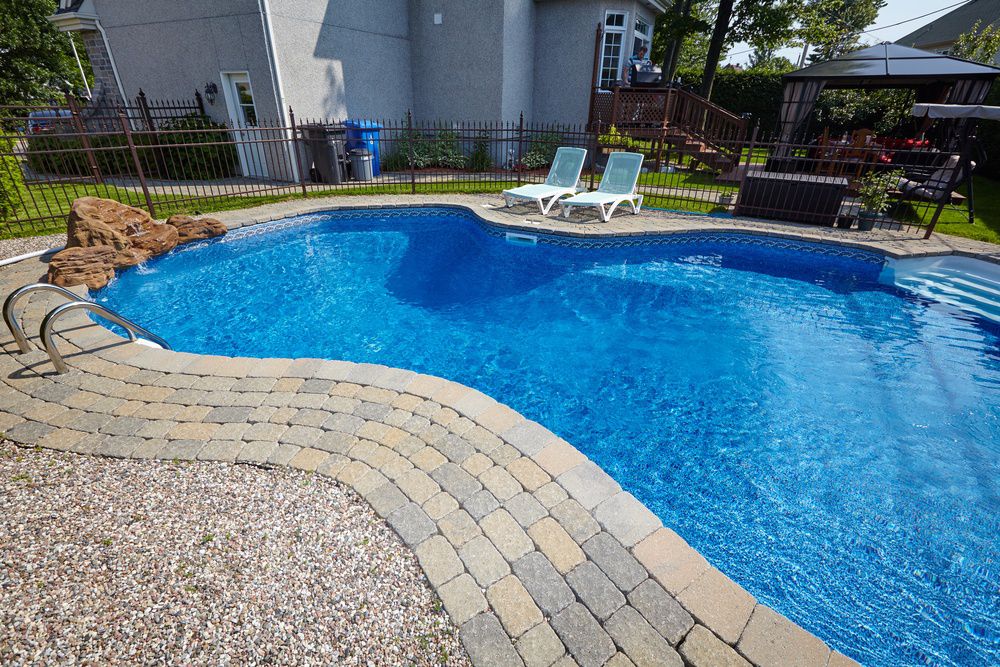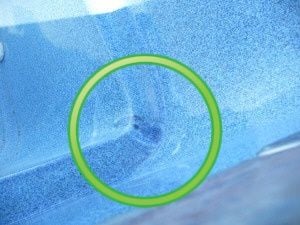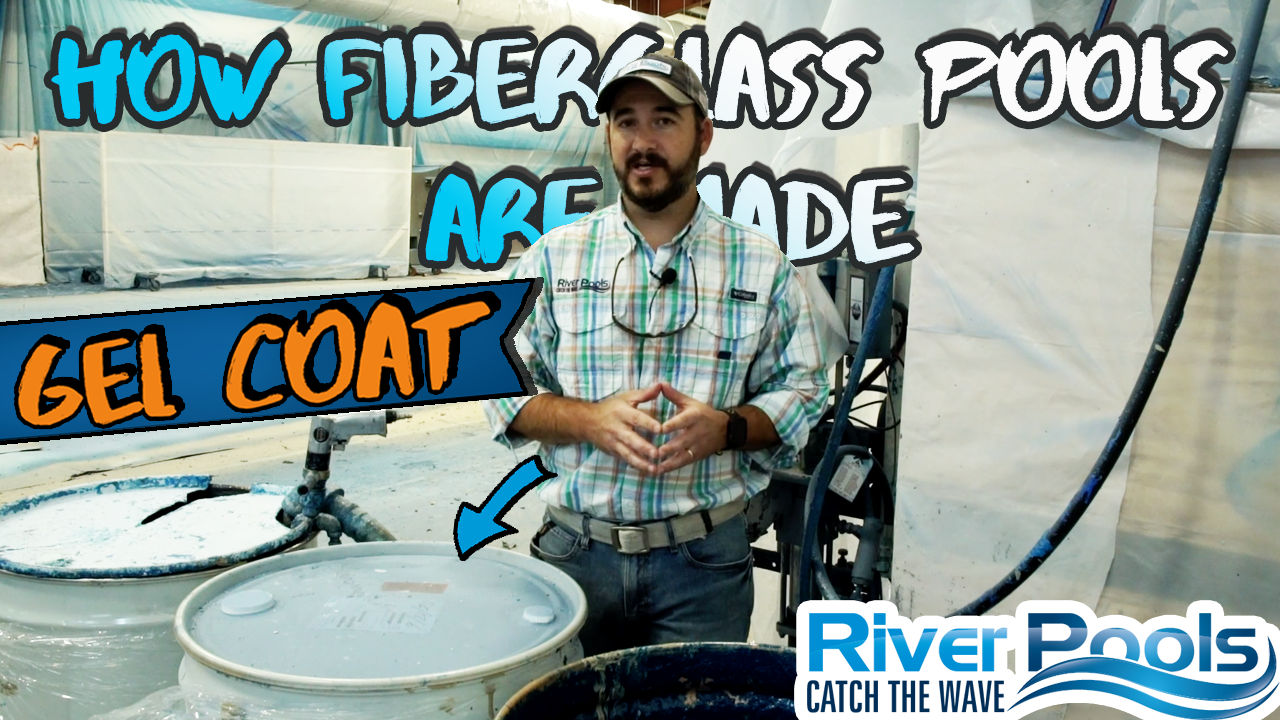
This article is written by Jason Hughes, a renowned expert in fiberglass pool installation. With experience from over 2,000 projects, Jason is dedicated to educating both the public and industry professionals. He serves as a Fiberglass Pool Installation Course Instructor for Genesis and Pool & Hot Tub Alliance (PHTA).
If you're considering the purchase of an inground fiberglass pool and have done any research on the web, you've probably encountered some discussion of the problems associated with fiberglass pools.
As someone who has worked extensively in the fiberglass pool industry, I've encountered various challenges over the years. In this article, I'll discuss four common issues that can arise with fiberglass pools, their potential causes, and how you, as a consumer, might approach them. It's worth noting that these problems, while worth understanding, are generally uncommon and can often be prevented through proper manufacturing and installation practices.
My experience in the field, along with numerous discussions with fiberglass pool installers from different regions, has provided me with a broad perspective on inground fiberglass pools. This includes insights into their advantages, potential drawbacks, and occasional complications that can arise during installation or ownership.
I share this information with you, hoping you'll never end up on one of those online swimming pool forums pleading for help.
The most common fiberglass pool problems and solutions
- Mismatched repairs on some colored gelcoats (solution: solid-color gelcoats)
- Spider cracks in the gelcoat (solution: a great manufacturer and installer)
- Pool walls bulging (solution: gravel backfill)
- Leaks from plumbing settlement (solution: gravel backfill and proper installation techniques)
Problem #1: Repairs on Colored Fiberglass Pools
Colored fiberglass pools have become the norm. Virtually all manufacturers now offer a variety of colors beyond the standard white and baby blue marine gelcoat.
The problem simply stated is this: if you need to repair a pool, it can be difficult to match some colored finishes with the factory finish.
The reality is that the vast majority of fiberglass pools may not need repairs within the first 20 to 40 years. However, sometimes issues arise that merit repair work. It could be something small, like a rock flying up and hitting the pool during shipping, or a structural crack that may result from mishandling. Granted, these instances are very, very rare, but they do happen.

What's the solution?
Well, we can't change the reality that some fiberglass pools are going to need repairs for one reason or another. But to lower the risk of having a substandard repair, you should look for two things: a solid surface finish and a well-trained repair technician.
Solid Surface Gelcoat Finishes
Some colored finishes are applied in multiple layers (solid color, metallic flake, and clear coat, for example). These layers overlap each other to achieve the desired look.
However, when someone attempts a field repair with these multi-layered finishes, matching the factory look is difficult, because it's impossible to duplicate the manufacturing process.
In contrast, a solid surface finish is applied only once, which makes field repairs to fiberglass pool gelcoat a lot less daunting. Typically, these repairs are a closer match to the factory finish.
If this is an important issue to you, research the various fiberglass pool manufacturers to determine if their colored finish is a solid surface or multi-layered finish.
Some manufacturers, like River Pools, only use solid surface gelcoat finishes, in a single application.

Well-Trained Repair Technicians
There's no guarantee that any repair will be seamless. In fact, the truth is that it will likely be noticeable if you're looking for it. However, a properly trained and attentive technician can make the difference between a repair that looks like a patch on a pair of jeans and a barely noticeable cosmetic detail.
The best policy is to try to prevent any field repairs altogether by producing high-quality pools and putting them through a rigorous inspection program.
PROBLEM: Conspicuous repairs on colored finishes
SOLUTION: Solid surface colored finish
Want to get started on your fiberglass pool project now? Check out our interactive Design and Price tool, which can give you a rough estimate for any size and shape of fiberglass pool you may want, along with accessories and options. Try it now for free, just click the button below:
Problem #2: Spider Cracks in Gelcoat

I have some good and bad news about gelcoat spider cracks.
- The bad news: it's hard to see them in the image because even in an empty pool they don't show very well.
- The good news: it's hard to see them, so in the unlikely event that they develop in your pool, you likely won't care.
Spider cracks have always been accepted as a reality of all types of fiberglass products. But what exactly is a spider crack?
Spider cracks are hairline cracks that occur in the surface layer, or gelcoat, of a fiberglass product. They are not structural in nature—the crack is normally only through the thin layer of gelcoat and does not typically extend into the structural laminate layers of the pool.
They are typically isolated to one small area of the pool and not a phenomenon that affects large areas.
The origin of the name "spider crack" stems from the manner in which some of the cracks begin in a center point and branch out like the spokes of a wheel. To fully address this issue, let's consider two key questions:
1. What causes gelcoat cracks?
2. What can be done to prevent them?
What causes gel coat cracks in fiberglass pools?
Gelcoat spider cracks in fiberglass pools are a result of pressure on a given point of the pool shell that exceeds the gelcoat's ability to flex. This pressure could be a result of improper shipping, improper manufacturing, or improper installation.
I've seen pools that were simply built too thin and couldn't withstand the pressures of lifting and shipping. They arrived on the job site with gelcoat cracks, and unfortunately, they had to be sent back. I've also known about pools that were built correctly but not stabilized properly during shipping with the same result.
But, installation is when the most common human error leads to gelcoat cracks.
Sometimes a protrusion on the pool floor like a tree root or clump of dirt (neither should be there) exerts enough pressure to cause a spider crack in the gelcoat. This occurs occasionally, but the most common cause of pressure on the floor of a fiberglass pool comes from the installer's attempts to level the pool shell.
Many times, fiberglass pool installers are forced to attempt to level a pool shell that is 2–3" out of level despite their best efforts to modify the base that the pool rests on. They lift and tweak the pool shell until they get it within a tolerable range. This exerts a tremendous amount of pressure on the pool that sometimes results in gelcoat cracks that can happen immediately or eventually develop over time.
It's also true that some manufacturers simply don't build level pool shells. This leads to these extreme efforts by the installer to make an unlevel pool level.
Another cause of gelcoat spider cracks can stem from the manufacturing process. If the gel coat is applied too thick, it becomes less pliable and more prone to cracking.
What's the solution?
Find a manufacturer that takes the time to discuss its mold production process and gelcoat application standards.


Also find a reputable contractor who will level the pool properly and install the pool with care. To determine the "levelness" of a manufacturer's pool shells, contact a few of their dealers and ask them point blank, "How level are their pool shells?"
You could also contact some existing customers of both the contractor and the pool manufacturer you're considering. It's a good idea to contact recent customers as well as those whose pools have been installed for more than five years. This will give you a good idea of how the pool will hold up over time.
PROBLEM: Spider cracks in gelcoat
SOLUTION: Find a well-manufactured pool and a great installer
Problem #3: Pool Walls Bulging
If you've talked to enough pool owners or browsed online forums, you might have heard about fiberglass pool walls developing a bulge. This can happen due to the common practice of using sand as backfill.
When sand gets saturated with water, it liquefies, which is fine– unless it's pressing against a flexible material like fiberglass. The pressure from the liquefied sand can be stronger than the water inside the pool, causing the walls to bulge, especially in areas with high water tables or water-retaining soils.
But don't worry! Fiberglass pools are still a great option, even in challenging soil conditions. The key is to make sure your pool is built strong enough to resist bulging and to ditch the sand backfill in favor of gravel.
Tens of thousands of fiberglass pools have been installed with sand backfill without incident, but when the right (or wrong) circumstances align, fiberglass pool walls can bulge.
Question: What happens to sand when it becomes saturated with water? It liquefies.
That would be fine if the liquefied sand were resting against something other than fiberglass, which is renowned for its flexibility. Fiberglass pools are structurally engineered to remain full of water. The outward pressure from the water works in conjunction with the structure of the pool to stabilize the vessel.
When sand liquefies, it is heavier than the water on the inside of the pool. If the wall is not strong enough to maintain its shape, a bulge develops. High water tables and soil that holds water combine and lead to situations where a significant amount of water surrounds the pool structure and saturates the backfill material.
So does this mean that fiberglass pools are not suitable for installations with high water table or certain soils? Quite the contrary; I would submit that there is no better pool to have in such circumstances.
You just need to make certain of two things:
- That your pool is strong enough to prevent bulges.
- That you eliminate the sand backfill and use gravel.
Is there a difference between the strength of fiberglass pools? Yes, but from the perspective of the consumer, it will be virtually impossible to rate the "bulge-ability" of the various pools on the market, because all manufacturers claim to be the strongest and most stable.
Nevertheless, the following four manufacturing practices will reduce, if not eliminate, wall bulges:
- Using un-filled resin. Many fiberglass pool manufacturers add filler to their resin, which weakens the strength of the pool.
- A well-designed laminate schedule. The right amount of material arranged in the ideal order will produce a stronger and more rigid structure.
- Using structural comb supports. These "ribs" support the side walls of the pool and increase resistance to bulges. Most manufacturers use them, but many use them in a way that seems to be more aesthetic than functional. In these cases the ribs appear to be used sparingly.
What's the installation solution?
On the installation side, the one thing you CAN control is the backfill material, and based on my experience, using gravel backfill is the only insurance against wall bulges in any situation with any pool.
Based on my experience, clean crushed blue stone ¾" or smaller gravel has several distinct advantages over sand or even round pea gravel.
First, with gravel or stone, its properties do not change when it becomes saturated with water, so it performs the same, wet or dry. This makes it ideal for any situation, especially in areas with a high water table or difficult soil conditions.
Second, the point-on-point friction between the pieces of gravel makes it a very stable material on the sides of the pool—much better than saturated sand that liquefies or pea gravel that acts like little ball bearings.
Third, the gravel compacts upon placement, unlike sand, which needs to be placed in incremental lifts and compacted with water. I'll address this further in the discussion on plumbing problems below. You'll see that this is a major advantage as well.
Opponents of gravel backfill may provide a variety of statements against it, even saying that it's a cheaper material and used to cut cost. In reality, it actually may cost significantly more to use gravel. But, given its inherent advantages I feel it is well worth the investment because you can't put a price tag on peace of mind.
PROBLEM: Pool walls bulging
SOLUTION: Gravel backfill
The best way to avoid problems like these is to work with highly-qualified fiberglass pool builders and installers -- like those in the network of independent installers who sell River Pools. Want to talk to a pool pro near you today? Click the button below and we'll connect you to the nearest independent installer:
Problem #4: Plumbing Settling Causes Leaks
Why would the plumbing settle? Good question!
The plumbing doesn't settle; the backfill material around the fiberglass pool settles and takes the plumbing with it. Yes, we're back to the sand vs. gravel discussion again. This is great because this is a topic that needs attention.
The problem is that it's very difficult to fully compact sand around a fiberglass pool during installation.
Many times, despite a fiberglass pool installer's best efforts to incrementally backfill with sand and fully saturate it with water, the sand still settles over time. The plumbing is encased in this sand, and as the sand settles, it exerts downward pressure on the plumbing of the swimming pool. Many installers tie their plumbing up to help hold it in place, but that's still a lot of pressure.
Settled plumbing manifests itself in one way...leaks.
What's the solution?
"Leak" is a dirty word! We want to avoid saying it, and we do so by recommending gravel backfill that just doesn't settle! If the backfill doesn't move, the plumbing doesn't move.
It's worth asking your installer about this and other techniques used to secure the plumbing on your fiberglass pool.
PROBLEM: Leaks from settled plumbing
SOLUTION: Gravel backfill and proper installation techniques
In Conclusion...
We want to thank Jason for sharing his expertise for this article. It's no coincidence that there are legitimate solutions to the top 4 problems associated with fiberglass pools. As an industry professional, he seems to constantly scrutinize products and processes to eliminate any potential problems and make life easier for everyone.
You want to enjoy a problem-free pool for years to come, and we want to help make that a reality. For more information about fiberglass pools, we recommend downloading comprehensive ebooks or guides from reputable manufacturers or industry associations. You can find ours by clicking the link below.
Up Next:
Fiberglass Swimming Pools 101: Manufacturing, Cost, and More
Large Fiberglass Pools FAQ: Cost, Designs, Pros and Cons
Editor's note: This article was originally written by Jason Hughes and was updated on August 28, 2024, with current information. River Pools is a brand of inground fiberglass pools produced in a manufacturing facility in Fortville, IN. While our expertise is in manufacturing fiberglass pools, we have access to a network of installers with expertise relating to project design, installation, and pool service. We often tap into this knowledge base and share information freely with homeowners, just like you, considering installing a swimming pool in your backyard.
Topics:




